Norman Goodman, Shepherd of Change in 45 Years as Manhattan Court Clerk, Dies at 95
In addition to county clerk, Goodman also served as commissioner of jurors, and during his 45-year reign he sent out more than 11 million jury summonses.
January 25, 2019 at 06:00 PM
5 minute read
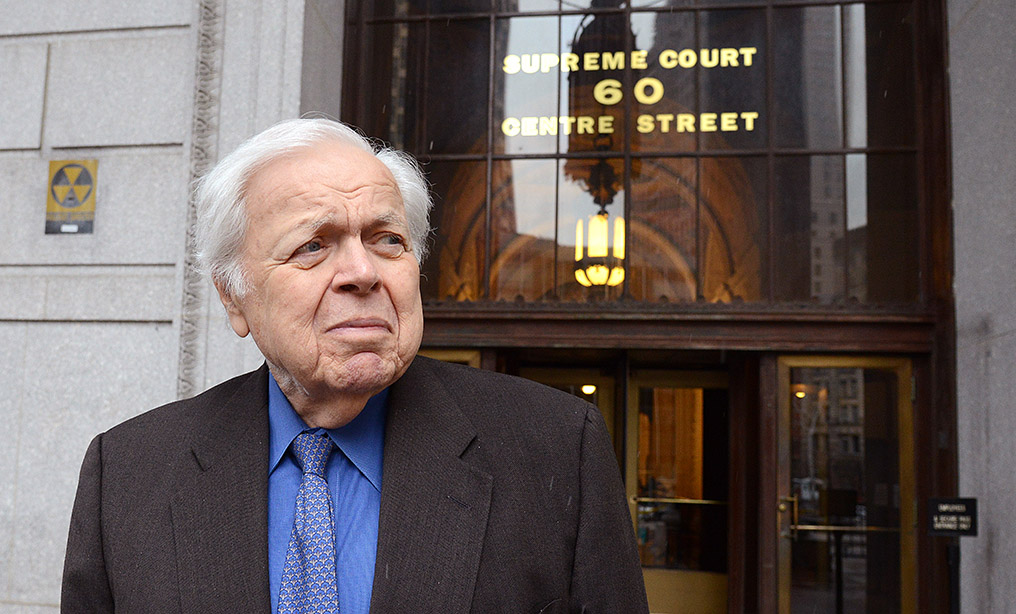 Norman Goodman in front of Manhattan Supreme Court in 2014. (Photo: Rick Kopstein/NYLJ)
Norman Goodman in front of Manhattan Supreme Court in 2014. (Photo: Rick Kopstein/NYLJ)
Norman Goodman, who served for more than four decades as New York County clerk and who many Manhattanites recognize as the name emblazoned on their jury summonses, died on Thursday. He was 95.
In addition to county clerk, Goodman also served as commissioner of jurors, and during his 45-year reign he sent out more than 11 million jury summonses. And while his name likely got many of those recipients to start kvetching, those who worked with him closely say that Goodman was devoted to making prospective jurors more comfortable and more enthusiastic about performing their civic duty.
“He did a tremendous amount to improve the perception of the jury system so that New Yorkers would be encouraged to serve with enthusiasm,” said Mark Zauderer of Ganfer Shore Leeds & Zauderer, who chaired a blue-ribbon commission on jury reform in New York on which Goodman served.
Goodman, the son of a wholesale dairy distributor, was born and raised in New Haven, Connecticut. He attended New York University back when it had a campus in the Bronx, but took a break from his education to serve in the U.S. Army for three years during World War II.
In 1947, he returned to New York to complete his undergraduate studies, then went on to obtain his law degree from NYU School of Law in 1950.
After graduation, he took a job with a Midtown law firm that would eventually be called Levey, Myers, Katz & Goodman and made partner by 1960. He went to work for the county clerk's office in 1966 and became county clerk in 1969. His salary was $14,000, Goodman told John Werner, the chief clerk for Manhattan Supreme Court, in a 2009 interview for an oral history for the Historical Society of the New York Courts.
Unlike the rest of the state, where county clerks are elected to terms, New York City's five county clerks are given lifetime appointments. Goodman's predecessor served for almost two decades and left the office when he was 80 years old.
But in Goodman's long tenure, he oversaw the transformation of the office from a largely paper-and-pen operation, back when jurors were picked from a punch card machine in the courthouse basement, to the era of electronic court records and e-filing.
After Chief Judge Judith Kaye became head of the state judiciary in 1993, Goodman took part in efforts to reform juries in New York. Among the changes implemented around that time, Werner said in an interview, was eliminating the time-honored practice of doling out jury-waivers to lawyers, doctors and other politically connected professionals with friends in high places, which Werner said had a considerable effect on the demographic composition of Manhattan juries.
Werner said in an interview that Goodman was an intellectually curious sort who was especially interested in the histories of the court system and the Foley Square area, which sits near the old site of the Five Points tenements and where the Manhattan courthouse complex stands today, including the courthouse at 60 Centre St.
Frustrated that the New York City government wouldn't devote funds to make repairs to 60 Centre St., Goodman once led a group of prominent Manhattan attorneys to raise private funds to make improvements to the courthouse. That included the courthouse rotunda, which features a mural that, like much of the artwork around the courthouse, was completed as a Works Progress Administration project.
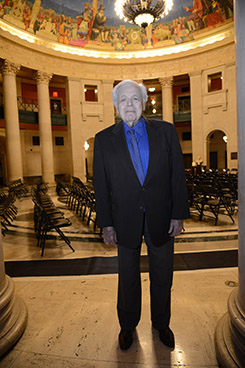 Goodman at the courthouse rotunda (Photo: Rick Kopstein/NYLJ)
Goodman at the courthouse rotunda (Photo: Rick Kopstein/NYLJ)Such murals also adorn the walls of the jury assembly room on the fourth floor of 60 Centre St., which was dubbed the Norman Goodman Jury Assembly Room.
Goodman retired at the end of 2014 and was succeeded in the position by Milton Adair Tingling, a former Manhattan judge.
Betty Weinberg Ellerin, a retired justice who served on the Appellate Division, First Department and who now works as senior counsel for Alston & Bird and was a friend of Goodman's for about a half-century, said that, from a judge's perspective, “there was only Norman Goodman and I hope others in his position aspire to follow his example.”
Goodman is preceded in death by his wife, Penny. He is survived by his brother, Robert; his daughters, Susan and Nancy; and two grandchildren.
Goodman's funeral is scheduled for 12:30 p.m. on Sunday at the Plaza Jewish Community Chapel at 630 Amsterdam Ave., which is at the intersection with 91st Street.
Read more:
Goodman Leaves Behind a Rich History of Change
County Clerk Looks Beyond 'The Way We've Always Done Things'
New York County Clerk Retiring After 45 Years
This content has been archived. It is available through our partners, LexisNexis® and Bloomberg Law.
To view this content, please continue to their sites.
Not a Lexis Subscriber?
Subscribe Now
Not a Bloomberg Law Subscriber?
Subscribe Now
NOT FOR REPRINT
© 2025 ALM Global, LLC, All Rights Reserved. Request academic re-use from www.copyright.com. All other uses, submit a request to [email protected]. For more information visit Asset & Logo Licensing.
You Might Like
View All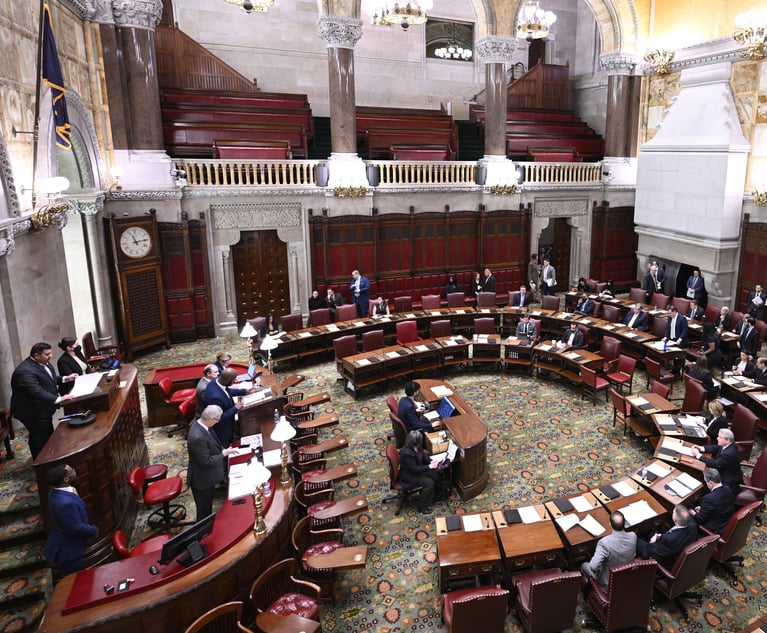
Relaxing Penalties on Discovery Noncompliance Allows Criminal Cases to Get Decided on Merit
5 minute read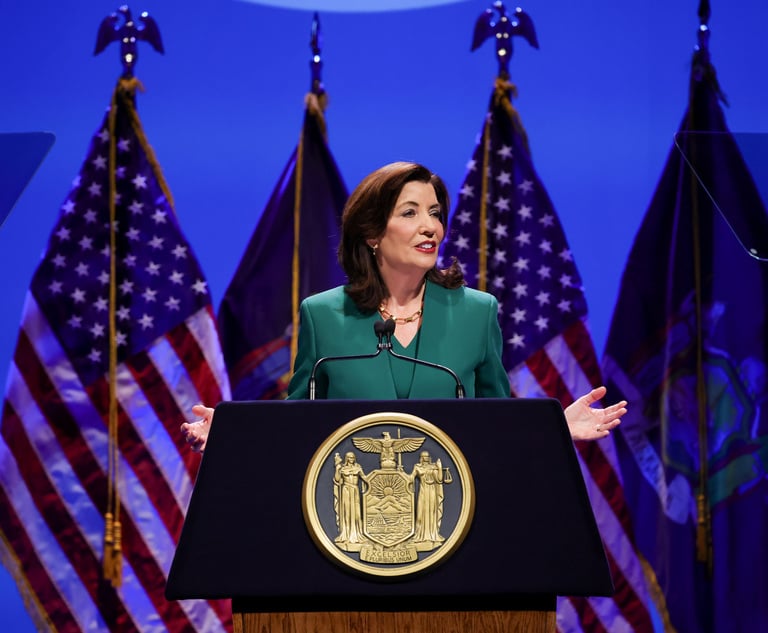
Bipartisan Lawmakers to Hochul Urge Greater Student Loan Forgiveness for Public-Interest Lawyers
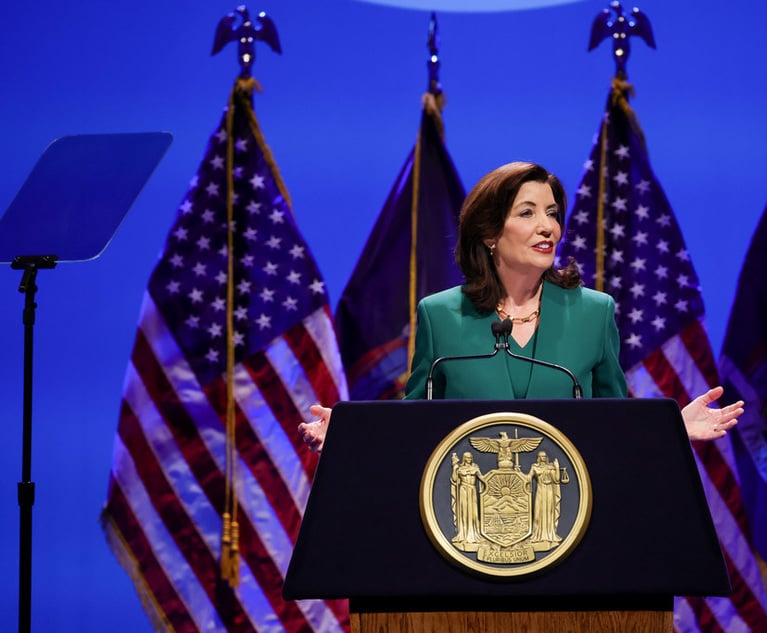
'Playing the Clock'?: Hochul Says NY's Discovery Loophole Is to Blame for Wide Dismissal of Criminal Cases

So Who Won? Congestion Pricing Ruling Leaves Both Sides Claiming Victory, Attorneys Seeking Clarification
4 minute readTrending Stories
- 1Trump Signs Executive Order Creating Strategic Bitcoin Reserve
- 2St. Jude Labs Sued for $14.3M for Allegedly Falling Short of Purchase Expectations
- 3'Ridiculously Busy': Several Law Firms Position Themselves as Go-To Experts on Trump’s Executive Orders
- 4States Reach New $7.4B Opioid Deal With Purdue After SCOTUS Ruling
- 5$975,000 Settlement Reached After Fall on Sidewalk
Who Got The Work
J. Brugh Lower of Gibbons has entered an appearance for industrial equipment supplier Devco Corporation in a pending trademark infringement lawsuit. The suit, accusing the defendant of selling knock-off Graco products, was filed Dec. 18 in New Jersey District Court by Rivkin Radler on behalf of Graco Inc. and Graco Minnesota. The case, assigned to U.S. District Judge Zahid N. Quraishi, is 3:24-cv-11294, Graco Inc. et al v. Devco Corporation.
Who Got The Work
Rebecca Maller-Stein and Kent A. Yalowitz of Arnold & Porter Kaye Scholer have entered their appearances for Hanaco Venture Capital and its executives, Lior Prosor and David Frankel, in a pending securities lawsuit. The action, filed on Dec. 24 in New York Southern District Court by Zell, Aron & Co. on behalf of Goldeneye Advisors, accuses the defendants of negligently and fraudulently managing the plaintiff's $1 million investment. The case, assigned to U.S. District Judge Vernon S. Broderick, is 1:24-cv-09918, Goldeneye Advisors, LLC v. Hanaco Venture Capital, Ltd. et al.
Who Got The Work
Attorneys from A&O Shearman has stepped in as defense counsel for Toronto-Dominion Bank and other defendants in a pending securities class action. The suit, filed Dec. 11 in New York Southern District Court by Bleichmar Fonti & Auld, accuses the defendants of concealing the bank's 'pervasive' deficiencies in regards to its compliance with the Bank Secrecy Act and the quality of its anti-money laundering controls. The case, assigned to U.S. District Judge Arun Subramanian, is 1:24-cv-09445, Gonzalez v. The Toronto-Dominion Bank et al.
Who Got The Work
Crown Castle International, a Pennsylvania company providing shared communications infrastructure, has turned to Luke D. Wolf of Gordon Rees Scully Mansukhani to fend off a pending breach-of-contract lawsuit. The court action, filed Nov. 25 in Michigan Eastern District Court by Hooper Hathaway PC on behalf of The Town Residences LLC, accuses Crown Castle of failing to transfer approximately $30,000 in utility payments from T-Mobile in breach of a roof-top lease and assignment agreement. The case, assigned to U.S. District Judge Susan K. Declercq, is 2:24-cv-13131, The Town Residences LLC v. T-Mobile US, Inc. et al.
Who Got The Work
Wilfred P. Coronato and Daniel M. Schwartz of McCarter & English have stepped in as defense counsel to Electrolux Home Products Inc. in a pending product liability lawsuit. The court action, filed Nov. 26 in New York Eastern District Court by Poulos Lopiccolo PC and Nagel Rice LLP on behalf of David Stern, alleges that the defendant's refrigerators’ drawers and shelving repeatedly break and fall apart within months after purchase. The case, assigned to U.S. District Judge Joan M. Azrack, is 2:24-cv-08204, Stern v. Electrolux Home Products, Inc.
Featured Firms
Law Offices of Gary Martin Hays & Associates, P.C.
(470) 294-1674
Law Offices of Mark E. Salomone
(857) 444-6468
Smith & Hassler
(713) 739-1250






